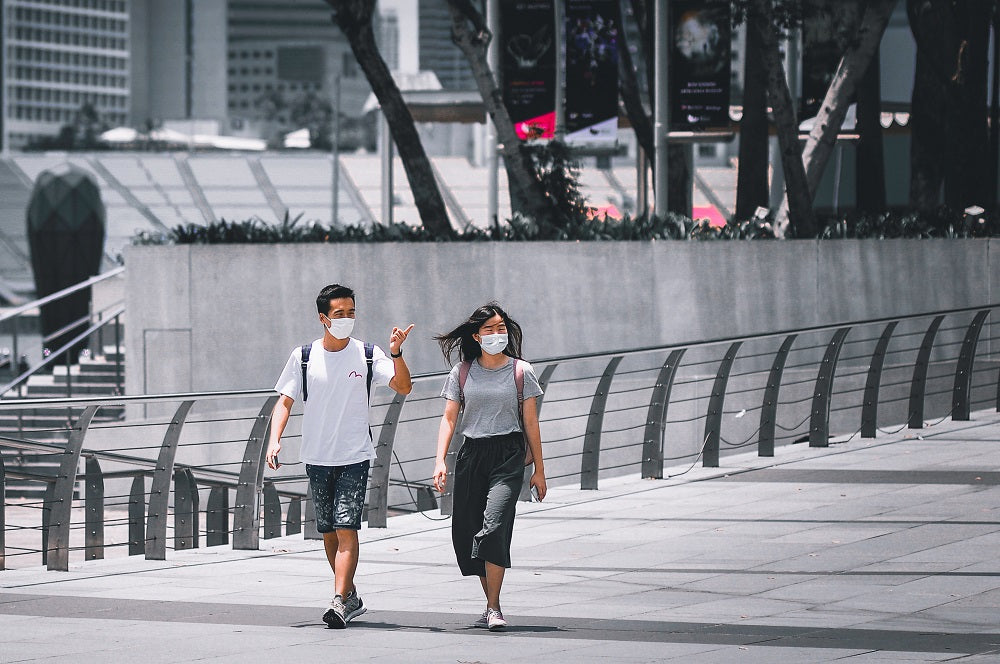
Do Breathing And Talking Contribute To COVID-19 Spread?
A new study - Consideration of the Aerosol Transmission for COVID-19 and Public Health - recently published in Risk Analysis - provides guidelines for sufficient inhalation protection that are important in curbing the spread of COVID-19. The study includes several lines of evidence for aerosol transmission - as well as recommendations for further research and public health communication.
On April 1, 2020, a letter produced by the National Academy of Sciences Committee on Emerging Infectious Diseases and 21st Century Health Threats concluded that even with limited research on SARS-CoV-2 specifically, “the results of available studies are consistent with aerosolization of virus from normal breathing.” Reports of asymptomatic individuals infecting others with COVID-19 reveals that activities such as normal breathing, talking, etc., produce small droplets that are capable of being transported, as healthy individuals are presumably not coughing or sneezing on a regular basis.
Current knowledge about the role of aerosols in the transmission of SARS-CoV-2 warrants urgent attention because current guidance and public health information has slowly shifted focus towards aerosols as a transmission pathway - predominantly associated with breathing and talking by asymptomatic individuals. The primary transmission methods of concern so far have been near field transmission - coughing and sneezing - and hand-to-face transport from infected surfaces. More attention should be paid to the inhalation of aerosols, which are small particles that can remain airborne and are capable of short- and long-range transport.
Since the aerosol particles produced by talking and breathing are so small, they linger in the air for relatively long periods of time before gravity pulls them to the ground. This allows them to be transported over greater distances. A 2006 study of SARS-CoV-1 found that particles with a diameter of 1-3 µm remained suspended in the air almost indefinitely, particles 10 µm in size took 17 minutes, and 20 µm took four minutes to fall to the floor. A recent laboratory study found that the virus can remain viable and infectious in aerosols for hours - it remained viable for the entire three-hour duration of the study - and on surfaces for up to days.
Recommendations
Authors Elizabeth L. Anderson, Paul Turnham, John R. Griffin and Chester C. Clarke, Exponent, Inc., propose the following recommendations to address aerosol transport of COVID-19:
- Collect data to explore the concentration, duration of survival and transport distances for SARS-CoV-2 in aerosol form under differing temperatures and humidity levels.
- Further explore airborne concentrations and the role of dose to various parts of the respiratory tract in the progression and severity of the disease.
- Investigate the potential for aerosol contamination of buildings, rooms and surfaces to provide a basis for decontamination protocols.
- Explore and record data to determine the role human activities play in potentially generating aerosols capable of transmitting SARS-CoV-2 in both enclosed and open spaces.
- Further explore appropriate measures to curb inhalation exposure to small aerosols (<5 µm) within buildings, rooms and surfaces where aerosols might travel and settle.
Subscribe to our Trusted Health Club newsletter for more information about natural living tips, natural health, oral health and skincare. If you are looking for more health resources make sure to check out the Trusted Health Resources list.
Written By:
The Society for Risk Analysis is a multidisciplinary, interdisciplinary, scholarly, international society that provides an open forum for all those interested in risk analysis. SRA was established in 1980 and has published Risk Analysis: An International Journal, the leading scholarly journal in the field, continuously since 1981. For more information, visit www.sra.org.
Reviewed By:
Founder Ray Spotts has a passion for all things natural and has made a life study of nature as it relates to health and well-being. Ray became a forerunner bringing products to market that are extraordinarily effective and free from potentially harmful chemicals and additives. For this reason Ray formed Trusted Health Products, a company you can trust for clean, effective, and healthy products. Ray is an organic gardener, likes fishing, hiking, and teaching and mentoring people to start new businesses. You can get his book for free, “How To Succeed In Business Based On God’s Word,” at www.rayspotts.com.
1 comment
Check Out Our Reviews
1 year ago
I have 4 implants and I have been using since I got them had severe gum disease prior that is why I needed the implants. I go to Penn Dental school and they say my gums and the implants are doing great. So if you have gum disease use this product.
2 years ago
My dentist keeps asking me how my gums look so much better and pockets are getting smaller. Hygienist also noticed the difference and I can see the difference. Will continue to use daily.
2 years ago
Fortunately, I was given a chance to try a product that has been creating a buzz online and amongst friends – OraMD. This is one item I can’t go without. So glad I tried it.




But what about the temperature of the room? Covid19 is destroyed at 80 Degrees. So if the aerosol is spread into air that is 80 Degrees or warmer, wouldn’t it be destroyed? In an indoor area, that is controlled with air conditioning, it might survive, but at warmer temps, its makes sense that the virus would be killed.